Table for Two is a series focusing on two-player board games. Today’s game is Septikon: Uranium Wars, a sci-fi game from Russia about mining uranium—or at least fighting your rival stations for their uranium.
Septikon: Uranium Wars was released in Russia in 2012 by Hobby World and Igrology, which then ran a successful Kickstarter campaign last fall to fund an English edition with plastic miniatures to replace some of the wooden meeples and cardboard tokens. Unfortunately, my demo copy got lost in transit and the replacement didn’t arrive until well after the Kickstarter campaign. The good news, though, is that you can still place a pre-order through Hobby World now and still get it when the Kickstarter rewards ship. (The release is planned for May this year.)
The story is that you run a Septikon uranium mining and processing space station, and you’re ready to start mining those asteroids. However, your competitors have also purchased an identical space station. While I suppose you could both just go about your business and mine uranium, you’re more interested in shutting down your competitors first. Fortunately, it turns out that the Septikon is fitted out with plenty of offensive capabilities, too.
At a glance
Septikon is for 2 players (you can play a 4-player variant if you have two copies of the game), ages 10 and up. The box says it takes about 30 minutes to play, though I would plan for closer to an hour, particularly the first few times. The pre-order price is $60, or you can get a print and play for $10. For more info visit the Hobby World Septikon website.

Components
My copy of the game is the Russian version with an English rulebook included, so types of components will vary somewhat, but the overall component count should be the same. (Mine did not have the specialized figures for rockets, biodrones, nukes, satellites and shields.)
- Game board
- 2 six-sided dice
- 24 Clone figures
- 10 Biodrone figures
- 8 Rocket figures
- 4 Nuclear Rocket figures
- 8 Satellite figures
- 8 Energy Shield figures
- 80 damage tokens
- 160 wooden resource cubes

The Kickstarter page also mentions that it will include plastic baggies for all the parts, so that’s a nice touch. My game board is a six-piece puzzle, but I don’t know if the final version will have a tri-fold board instead.
One thing that really struck me when I first opened the box—actually, before I even opened the box—was the way Septikon looks. It’s just so … Russian. The graphics and design style just look so different from any other game I’ve played, and it makes me want to check out other Russian games to see if they have the same design sensibility. It looks overwhelming at first, but the game is actually not that complicated to learn. The core rulebook is only 4 pages long, with 3 more pages detailing the various modules on the board.
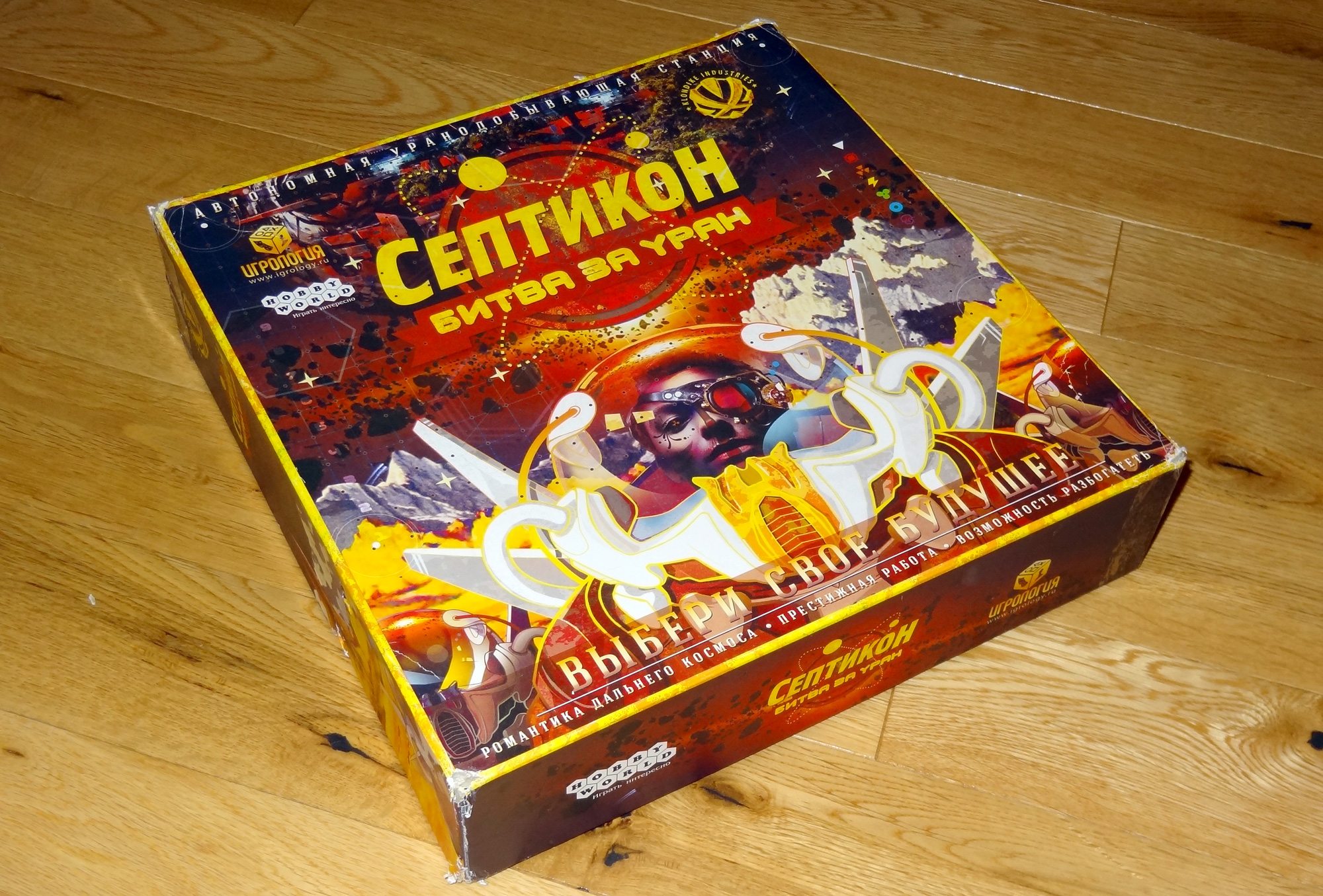
The rulebook, sort of written in the form of an owner’s manual, has an understated humor to it, not all of it intentional. I found it particularly amusing that the turn structure has so many lines labeled “Mandatory,” including “Let the opponent have his turn.”
How to Play
The full rulebook is available as a PDF here, so I’ll highlight some of the main points.
The goal of the game is shut down your opponent—whether that’s by killing off all their clones, exhausting their resources, or shutting down access to production or battle modules. Or, failing that, do 15 damage to the opponent and call it a game (which is how my games have ended so far).
Your ship consists of several sections: closest to you are two rows of production modules that produce resources, often by trading in other resources. (Biomass is one of the few that can be generated without spending anything.) The next four rows are your warehouses where resources are stored, with a central hallway that contains a few specialized weapons. The top two rows are your battle zone, with modules for attack and defense. Finally, at the very top, on the outside surface of the station, is where you position gunners so you can fire weapons across the open space at your enemy.
You start with 10 energy and 5 of everything else, and 5 clones which you place inside your station wherever you’d like (except in the warehouses). One thing to note is that getting around in the station requires walking down very long hallways, since there are some doorways at the left and right ends, and then a few down the center of the ship.
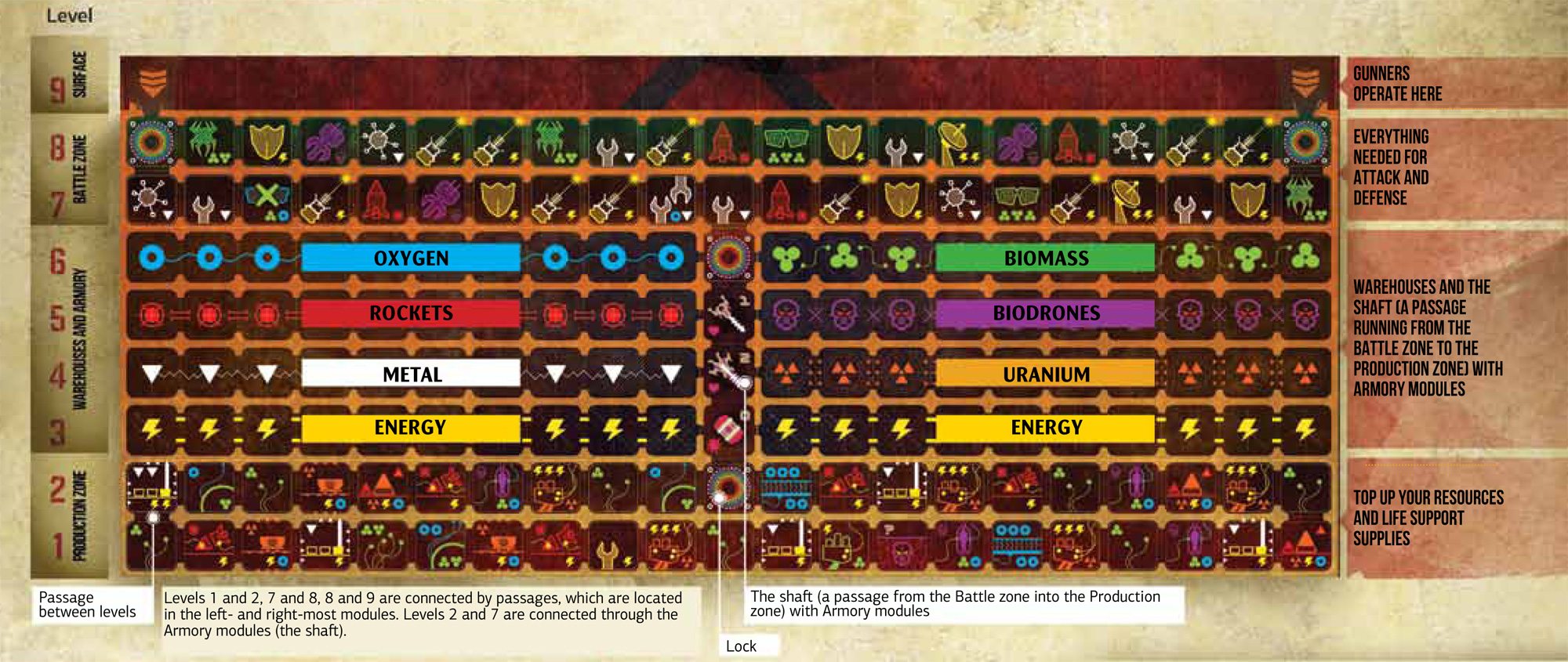
On your turn, you roll the die, and move one of your clones exactly that many spaces, and then use the module they land on. With five clones, that means you have a lot of different options. On the production side, the icons at the bottom of the module show what you spend, and the icons at the top show you what you generate. For instance, you can spend energy to forge metal, or spend uranium to generate energy.
For attacks, you need to position clones on the outside, at which point they become gunners. Then when a clone lands on an attack or defense module, you can spend the appropriate resources to launch attacks from the gunners’ positions. So you can spend energy to shoot lasers, or send out rockets and biodrones toward the enemy station. You can attack once for each gunner you have in position, as long as you spend the resources for each attack.
The die roll also determines how many spaces the biodrones and rockets move until they land, and also how many spaces you may move biodrones around in the enemy ship, wreaking havoc.
That’s basically it—you take turns, trying to generate enough resources to launch attacks and prepare defenses until somebody has been put out of commission.
The Verdict
Aside from the late arrival of the demo copy, it took me a long time to attempt Septikon because it just looked so complicated, all those different modules all over the board. In fact, though, the production modules are extremely easy to parse—resources go in, resources come out—and there are a limited number of weapons and defenses that are just repeated several times.
The roll-and-move may seem like it’s fairly luck-dependent, but in fact there is room for strategy, because you get to choose which of your clones to move each time you roll. The key is making the most of what you get, and positioning your clones to take advantage of whatever numbers might come up.
As the Kickstarter video suggests, there are various approaches you can take, but ultimately it depends on how well you balance your production, defense, and offense. Put a bunch of clones on the surface so you can launch attacks, and pretty soon you’ll run out of missiles or energy and not have enough options for replenishing. But if you try to just produce without focusing on the battle zone, your opponents can seal off your warehouses and you won’t have access to your resources at all.
The game can lend itself to analysis paralysis: if you have five clones on the board, one roll of the die gives you at least 10 possible directions to move, not counting branching paths. Just taking the time to count out your die roll that many times can make the game drag, and if you managed to introduce even more clones to your station then the problem is compounded.
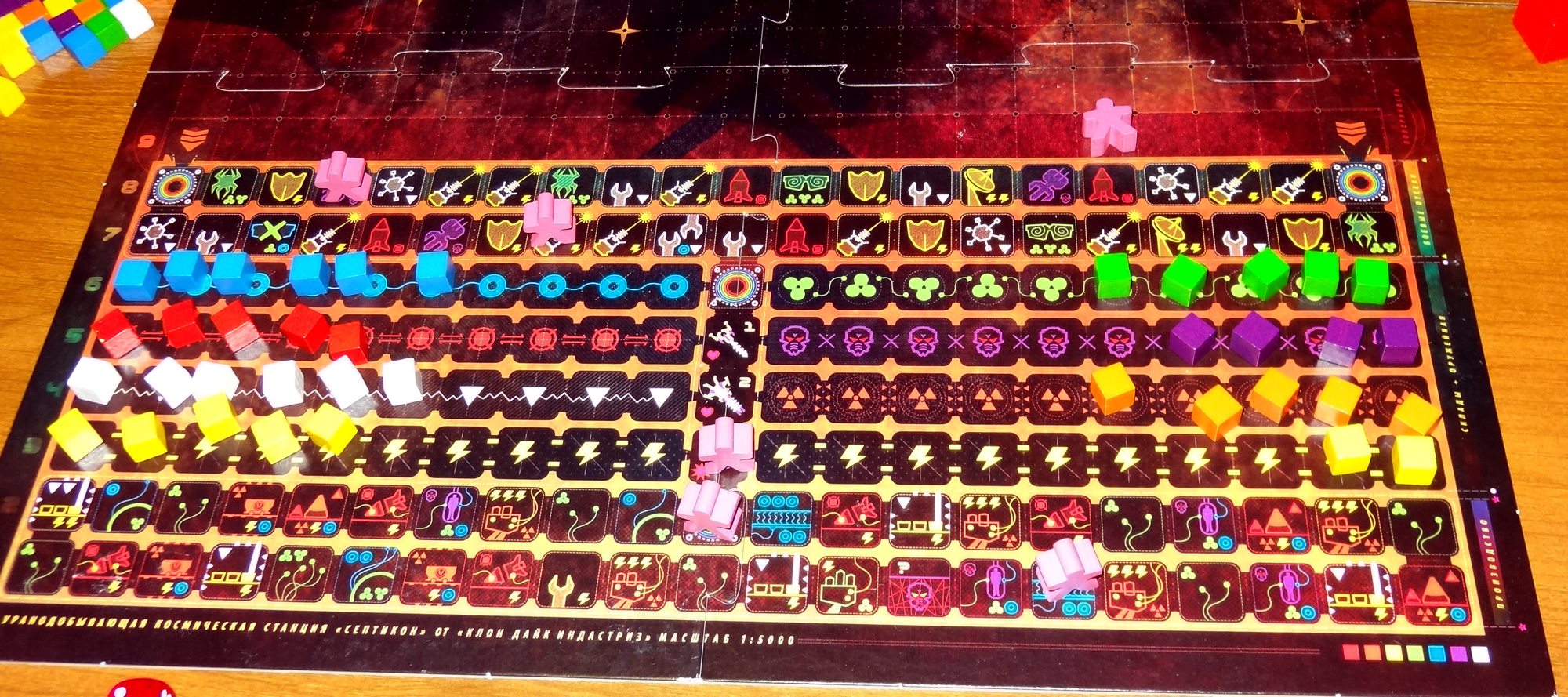
However, if you and your opponent can make snappy decisions, then the game can go pretty quickly—after all, you’re only moving one clone (and possibly some biodrones) each turn. Once you get the hang of the different modules, you get to make fun decisions—do I shoot a laser (1 energy) which immediately strikes the the other base, but only hits the first undamaged square it encounters? Or do I launch a biodrone, which may take several turns to reach the opposing base (or get shot down before it reaches them), because then I can run around in the other ship, eating up resources or forcing the opponent to use and produce resources of my choosing? Do I launch rockets quickly, or spend the resource to turn them into nukes, which do a lot more damage?
The other downside to the game is the price—$60 might be too high for a 2-player game, although you’re certainly getting your money’s worth of components. If you’re unsure, I’d suggest either getting the print-and-play (if you have a lot of wooden cubes to spare) or at least watching some of the gameplay videos and reviews to see if it looks like your type of game.
As it is a head-to-head competitive game with direct attacks on each other, it should go without saying that the game is best for people who don’t take things personally, because the game is all about the “take that” mechanic. Everything you do is either damaging the other player or gearing up so you can damage the other player. (Well, okay, or repairing the damage the other player has done to you.)
Despite all of that, I really had fun playing Septikon, and I’m looking forward to playing it more (and, I hope, actually winning). It feels different from both Euro-style games and American games that I’m accustomed to, and that in itself is pretty intriguing, but I also like the types of decisions you’re forced to make throughout the game. The meeple-and-cardboard version I have is pretty cool, but I think the plastic miniatures would be a lot of fun because they have a bit more personality than the wooden cubes we’ve been using for missiles and biodrones. I wish I’d gotten it in time to promote the Kickstarter, because although they hit their goal there were several planned stretch goals that they did not make.
If you don’t mind spending a bit more on a game for two, then you should check out Septikon. It is mandatory.

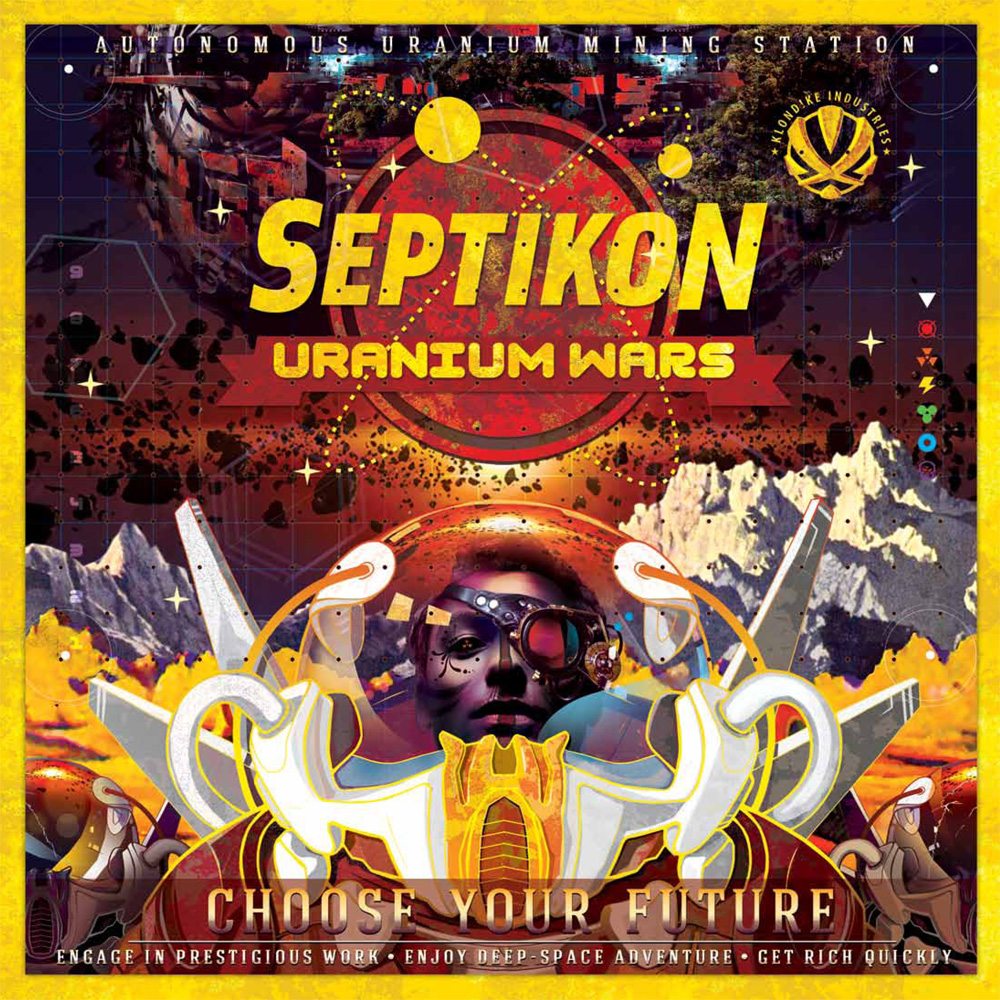


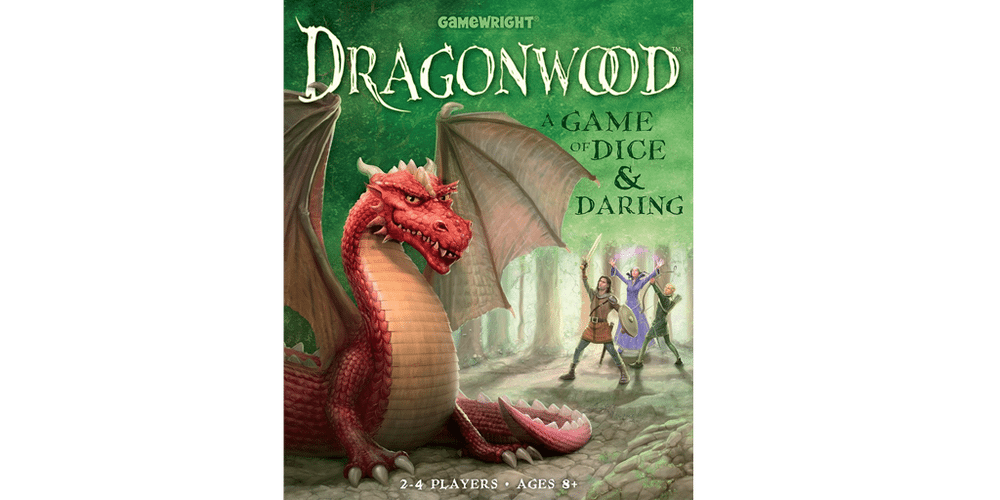

I am enjoying this series, but would love some 2 player games that we could buy and play today. 😉 Our family loves games, but my husband works nights during the week so it is just my son and I at home. I’m tired of playing Pokemon every night and ready to move on to something more fun and exciting for just the 2 of us.
Hi, Cindy! Stay tuned—I’m just getting started, and these two happened to be ones that I’d played already. I’ll have a few more coming up in the next couple of weeks, but I may also re-run a few relevant reviews of older games for two players.